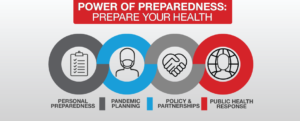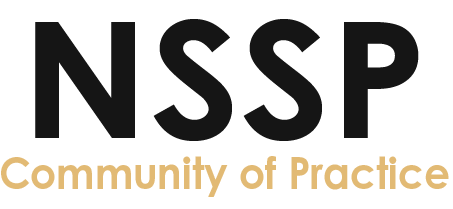
What is SPHERR?
Co-chaired by Bill Smith (Maricopa Co., AZ) and Zach Faigen (NC), the Syndromic Surveillance and Public Health Emergency Preparedness, Response, and Recovery (SPHERR) Subcommittee helps syndromic surveillance and public health preparedness professionals fully integrate syndromic surveillance data and information into emergency preparedness and response. SPHERR provides access to a national peer network for ad hoc support or collaboration during incidents and events of national interest (e.g., extreme weather and mass gatherings).
When Does SPHERR Meet?
SPHERR meets monthly on the 1st Friday of the month from 2:00–2:45 pm ET.
What is SPHERR Up To?
On February 21st, 2020, SPHERR hosted an EVALI (E-cigarette Vaping-Associated Lung Injury) Hot Wash/Lessons Learned practice exchange call. The goal was to share and discover areas of the EVALI response that went well and are worth repeating, as well as the things that we’d like to do differently next time. The proven strategy of identifying best practices and lessons learned from previous responses in the use case of EVALI was employed to inform and facilitate improvement of response capabilities in current and future emergency response activities.
Preparation for the call included development and distribution of notification materials and a timeline of major EVALI events (to facilitate recall and give participants a common framework in which to discuss the EVALI response).
Participants were encouraged to take time to think over their role in the EVALI response; to consider things that they thought went well, as well as things that they thought could be changed for the better. Participants were encouraged to invite interested colleagues who were part of the response or recovery and were provided with questions to consider in advance of the call:
- How did you feel that the Vaping/EVALI query development process went?
- How did the iterative process of testing, evaluating and improving queries work from your perspective?
- How well did information sharing work within your syndromic surveillance/epi staff?
- How well did information sharing from syndromic surveillance staff to PHEP/Emergency Management work?
- Are there people/groups/organizations that you wish you’d communicated with (or received communication from) sooner/more effectively?
The call was attended by 23 participants and was facilitated Bill, Zach, and Charlie. Participants focused on several areas that will be important to consider in how SyS is incorporated into emergency response:
- Participants thought that incorporation of informal communication (such as the shared EVALI Slack Channel) helped facilitate communication during the response
- Collaboration across different levels of government (i.e., local, state, federal) was useful
- Utilizing the community of practice calls for discussion and dissemination of information was well-received
- Sharing of draft queries, both early in the response and later, facilitated query development
- Sharing of dashboards was a good practice – the dashboard sharing library was considered a good idea
- Two-way communication between SyS staff and those who used SyS information and reports was an important strength (state-level communications specifically mentioned)
- It is important to demonstrate value of SyS early in a response
How Can I Learn More and Get Involved?
Check out previous SPHERR meeting resources on the Knowledge Repository, and join SPHERR by registering for the subcommittee here or by emailing syndromic@cste.org.



